本文
A Village That Continued to Practice Their Religious Faith Through Secretly Venerating Religious Images
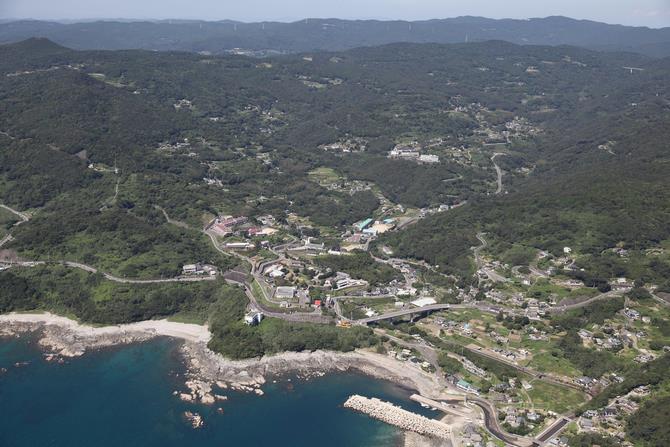
The Significance of Shitsu Village in Sotome
The village of Shitsu in Sotome is one of four villages that show what sorts of objects the Hidden Christians venerated as part of practicing their faith.
Under the ban on Christianity, the Hidden Christians of Shitsu concealed their faith from the world. They secretly practiced their faith through the veneration of religious pictures related to Christianity, and by organizing their lives around catechetical books and the Christian church calendar.
Many Hidden Christians from the Sotome region migrated to the Gotō Islands, spreading their communities to the remote islands off Nagasaki.
Once the ban on Christianity was lifted, the Hidden Christians of Shitsu gradually rejoined the Catholic Church. The building of a church on a hilltop overlooking the village symbolized the end of their era of hiding.
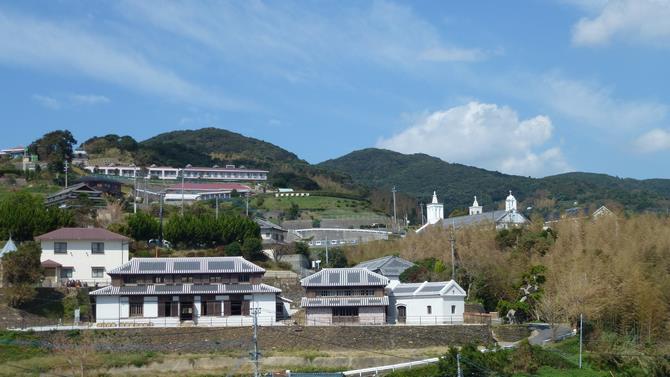
Shitsu Church and Former Shitsu Aid Center
Hidden-Christian Graveyards
An 1862 drawing shows us how the graveyards in the village of Shitsu were arranged by religious community. Grave markers from the time when Christianity was banned were heaps of a local stone called crystalline schist rather than stone pillars. Oral history tells us that the burial method of the Hidden Christians involved “a coffin in which the body was laid down with the head pointing south and the knees bent.” Archaeological digs at Nonaka Graveyard confirm this.
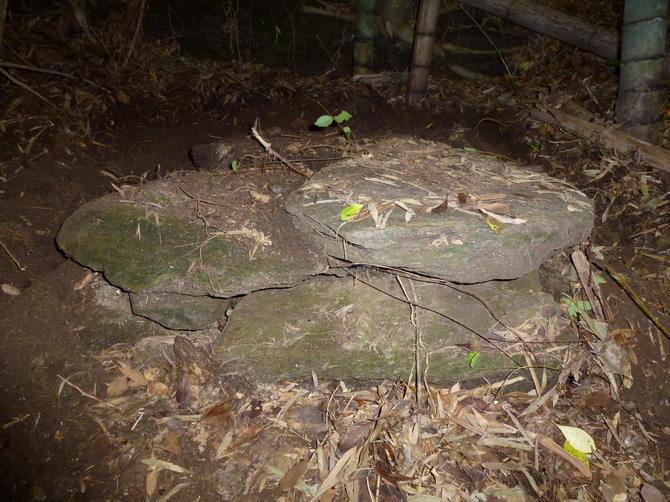
1 Kotabira graveyard
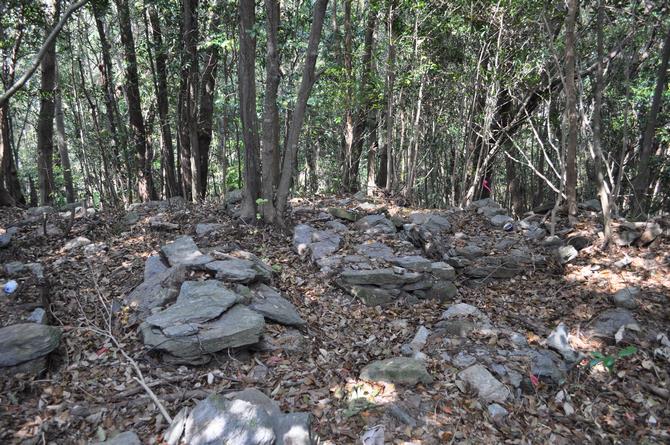
2 Shobuda graveyard
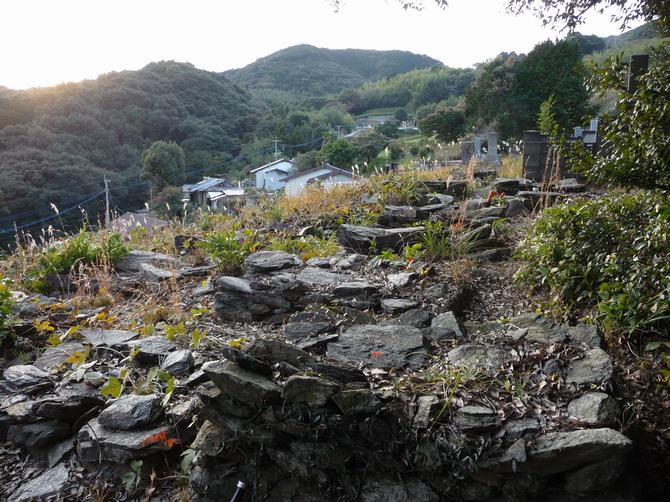
3 Nonaka graveyard
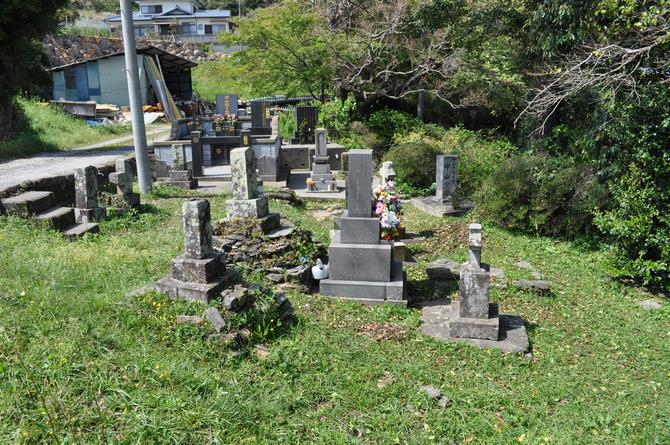
4 Hatakui graveyard
Religious Images
In the village of Shitsu, a variety of sacred objects were concealed, to be worshipped in secret. Among these were “Immaculate Conception Plaquette,” a large bronze medal depicting Mary, Mother of God, thought to have been brought over from sixteenth-century Europe and now in the Father de Rotz Memorial Hall; “Inasshio-sama,” a copper statuette of a hermit that belonged to the village headman and was treated as a representation of Saint Ignatius of Loyola, the founder of the Society of Jesus (now in the Sotome Museum of History and Folklore): and a number of paintings, including a portrait of Saint Michael and another of the Fifteen Mysteries of the Rosary. In 1867, there was disagreement among the local Hidden Christians about whether or not to rejoin the Catholic Church. This resulted in conflicts over ownership of Saint Michael and the Fifteen Mysteries of the Rosary.
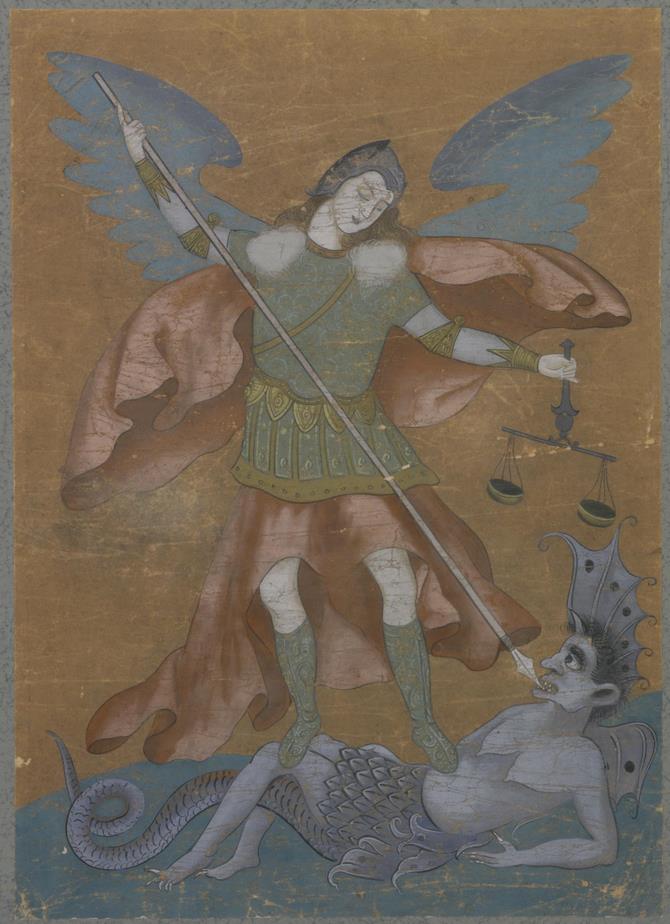
Painting of Saint Michael(Nagasaki Museum of History and Culture)
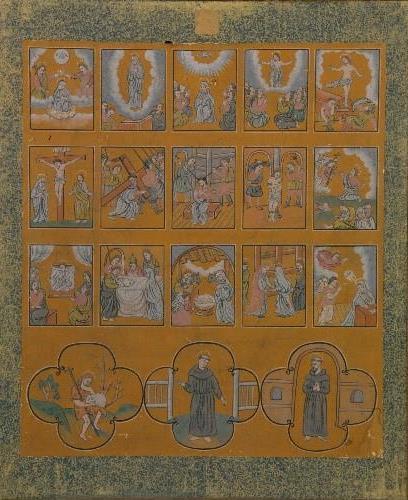
Painting of the Fifteen Mysteries of the Rosary
※These two pictures, which were transferred from Shitsu Church to Urakami Church, were destroyed in the 1945 atomic bombing. Copies made prior to their destruction survive.
Shitsu Village in Sotome: Scope and Elements
The village of Shitsu is located in the basin where the Shitsu River empties into the Sumonada Sea.
This village contains:
- The sites of houses where the Hidden Christians secretly kept religious paintings to pray to during the Christianity ban;
- Hidden Christian graveyards.
- The site of the office of the local administrator who supervised the village when Christianity was banned (now the Former Shitsu Aid Center)
- The beach where the French missionary came ashore after the “Discovery of the Hidden Christians” but before the lifting of the ban
- The site of the temporary church built immediately after the ban was lifted
- Shitsu Church, which symbolizes the coming to an end of the Hidden Christian period.
Sites in the village of Shitsu
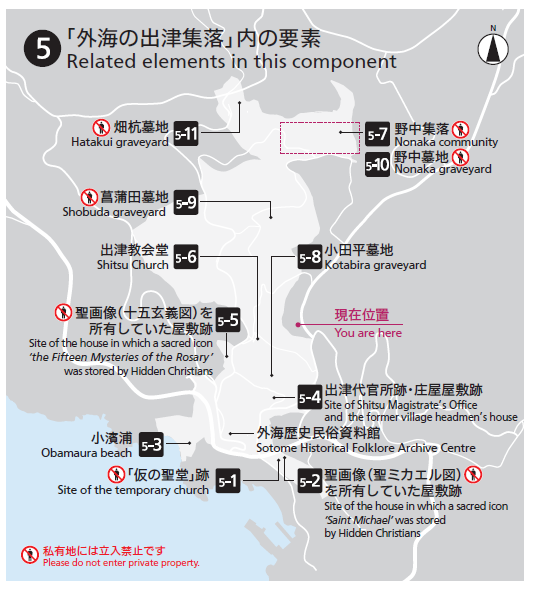
Sites in the village of Shitsu



